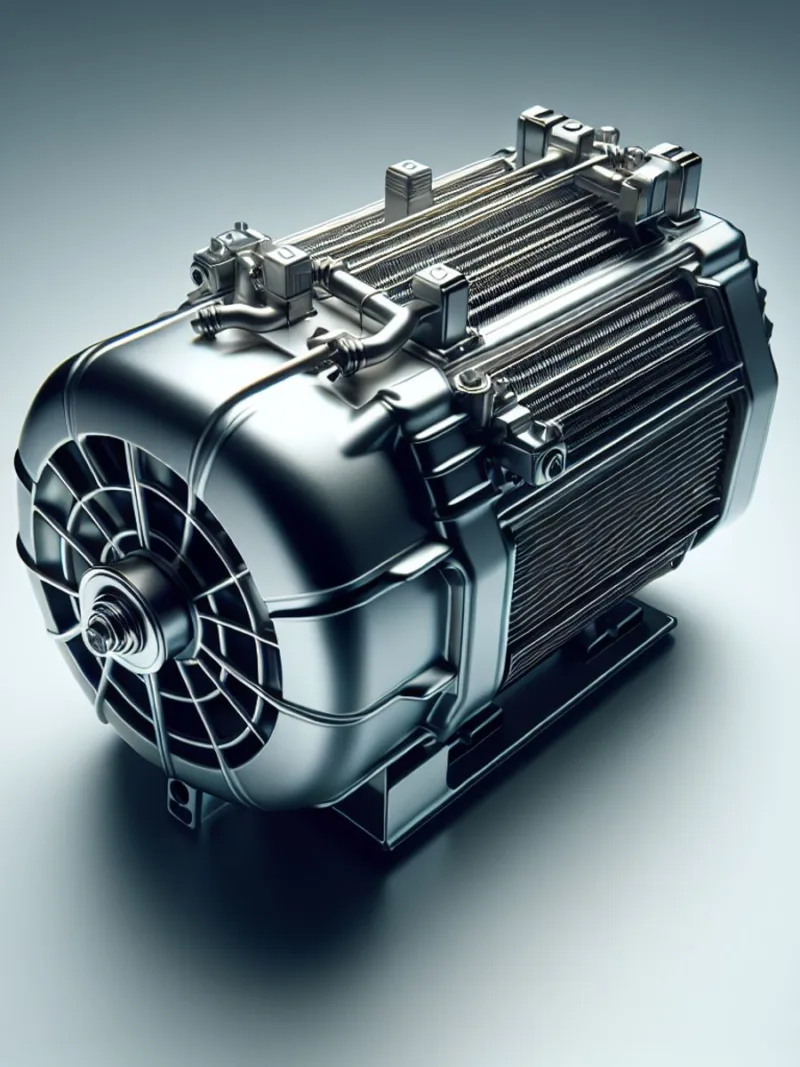Introduction
A refrigerator compressor is a crucial component in your fridge, responsible for circulating refrigerant through the cooling coils. This process involves converting low-pressure gaseous refrigerant into high-pressure gas when the thermostat signals the need for cold air. The fans then push this cool air into the fridge and freezer compartments, maintaining the desired temperature.
Knowing how to reset a refrigerator compressor can offer significant benefits:
- Troubleshooting: Address common issues such as unusual noises or improper cooling without needing professional help.
- Energy Savings: Adjusting the thermostat settings and defrosting the appliance optimizes its efficiency, potentially lowering your energy bills.
This guide will provide you with a simple, step-by-step method to reset your refrigerator compressor. For additional information on choosing the right refrigerator or dealing with malfunctioning units, explore these resources:
Understanding how to perform this reset can enhance your appliance’s longevity and ensure consistent performance.

Understanding the Refrigerator Compressor
A refrigerator compressor is an important part that helps keep your refrigerator and freezer cold. It works by squeezing a gaseous refrigerant from low pressure to high pressure, which makes it cool down.
Here’s how it works:
- When the refrigerator needs to be colder, the thermostat sends a signal.
- The compressor then increases the pressure of the refrigerant, turning it into a hot, high-pressure gas.
- This gas goes through coils at the back or bottom of the fridge, where it loses heat and becomes a liquid again.
- Fans help by blowing cool air into both the fridge and freezer, making sure that cold air is evenly distributed.
- This process keeps repeating to maintain the right temperature inside the fridge.
For more detailed information on related maintenance topics, consider visiting When You Need to Change Your Refrigerator which covers important factors to consider when replacing your refrigerator, or Why My Fridge Is Leaking Water which explains possible causes and solutions for water leakage in your fridge.
Benefits of Resetting a Refrigerator Compressor
Resetting the thermostat is an effective energy-saving measure. It allows for precise temperature adjustments, ensuring that your refrigerator operates at optimal efficiency. This process also enables defrosting, which can prevent ice build-up and maintain consistent cooling performance.
Maintaining stable temperatures within your refrigerator is crucial for food safety and preservation. Fluctuating temperatures can lead to the growth of harmful bacteria, compromising the quality and safety of stored food. By resetting the compressor, you help ensure that the refrigerator maintains a consistent temperature, thereby extending the shelf life of your groceries.
Key Points:
- Energy-Saving: Adjusting temperature settings helps reduce energy consumption.
- Defrosting: Prevents ice accumulation for improved cooling efficiency.
- Temperature Adjustments: Ensures precise and stable cooling.
- Food Preservation: Maintains safe storage conditions, extending food shelf life.
Understanding these benefits highlights the importance of knowing how to reset a refrigerator compressor.
Step-by-Step Guide: How to Reset a Refrigerator Compressor
Understanding how to reset a refrigerator compressor can be invaluable for maintaining your appliance’s efficiency. Follow these detailed instructions to ensure the process is done correctly:
Unplugging the Fridge Power Cord
- Locate the Power Cord: Find the power cord at the back of your refrigerator. It’s usually situated near the bottom, close to the floor.
- Unplug from Wall Outlet: Carefully unplug the power cord from the wall outlet. This action will stop the power flow, allowing the compressor to reset.
Tip: While unplugging, ensure you have a firm grip on the plug itself rather than pulling on the cord to avoid any damage.
Turning Off Fridge and Freezer Controls
- Set Controls to “Off” or “0”: Locate the controls for both the fridge and freezer compartments. These are often found inside, along one of the side walls, or at the top.
Important: This step ensures that all internal mechanisms are fully halted, aiding in a complete reset.
Waiting Period
- Wait for a Few Minutes: Leave the refrigerator unplugged and controls turned off for several minutes, typically around 5-10 minutes.
Purpose: This waiting period allows any residual energy within the system to dissipate, ensuring a thorough reset.
- During this time, you can take advantage of this pause to clean any dust or debris around and under your refrigerator. A clean environment can contribute to better efficiency once your appliance is back up and running.
Plugging Back In
- Reconnect Power Cord: Plug the refrigerator’s power cord back into the wall outlet.
- Ensure that the connection is secure to avoid any electrical issues.
Safety Tip: Check that your hands are dry before handling electrical plugs to avoid electric shock.
Adjusting Controls
- Reset Controls to Desired Temperature: Turn the fridge and freezer control back on, setting them to your desired temperature settings (e.g., “5” for normal).
- Note: Refer to your refrigerator’s user manual for optimal temperature settings if unsure.
Reminder: Avoid setting temperatures too low as it may cause unnecessary energy consumption and potential freezing issues in non-freezer compartments.
Stabilization Period
- Allow Up to One Day for Stable Temperature Adjustment: It may take up to 24 hours for your refrigerator to stabilize at the new settings.
- During this period, monitor temperatures periodically to ensure proper cooling.
Be mindful not to open doors frequently as it can affect stabilization time by letting warm air in.
In some cases, you might also find it beneficial to turn off the freezer while keeping the fridge turned on. This can be useful if you want to conserve energy or troubleshoot issues specifically related to the freezer compartment without affecting other stored items in your fridge section.
By following this step-by-step guide, you can effectively reset your refrigerator compressor, potentially saving on energy costs and improving overall efficiency.
Signs of a Malfunctioning Refrigerator Compressor
Identifying the signs of a broken refrigerator compressor is crucial for maintaining optimal appliance performance. Some common indicators include:
- Unusual Noises: A malfunctioning compressor often emits loud, continuous humming, knocking, or clicking sounds. These noises typically signify internal motor issues or mechanical failures.
- Failure to Cool Properly: Inefficient cooling is another telltale sign. If the refrigerator compartment remains warm despite being set to cold, the compressor might be struggling to maintain the desired temperature.
Regularly monitoring these symptoms can help in early detection and timely intervention, preventing further damage to the refrigerator.
Safety Precautions and Maintenance Tips
Proper safety precautions and regular maintenance are crucial to ensure the longevity and efficiency of your refrigerator compressor.
1. Use a Dedicated Circuit
It is essential to have a dedicated circuit for your refrigerator. This prevents the compressor from overworking due to shared electrical loads, which can lead to overheating and potential failure.
2. Check Breaker Box Grounding
Ensuring that your breaker box is properly grounded is vital. Proper grounding helps prevent electrical surges that can cause significant damage to the refrigerator compressor.
3. Seek Professional Help for Complex Issues
For complex issues such as compressor repair or replacement, it is advisable to call a professional handyman. They possess the necessary expertise and tools to handle intricate repairs safely and effectively.
4. Regularly Inspect Your Appliance
Regular inspections of your refrigerator are necessary for optimal performance. Routine checks can identify potential issues early, allowing for timely intervention before major problems arise.
Implementing these safety precautions and maintenance tips ensures the effective operation of your refrigerator compressor, safeguarding against costly repairs and extending its lifespan.
Conclusion
Knowing how to reset a refrigerator compressor is crucial for troubleshooting and saving energy. Resetting the compressor can:
- Resolve common cooling issues
- Restore optimal performance
- Reduce energy costs
This simple yet effective maintenance task ensures that your refrigerator operates efficiently, maintaining stable temperatures essential for food safety and preservation.
For those who may encounter difficulties or prefer professional assistance, reliable Cold Direct services offer expert support for all refrigerator compressor concerns. Their team of experienced technicians can provide comprehensive solutions, ensuring your appliance functions at its best.
By staying informed and utilizing available resources, you can maintain your refrigerator’s efficiency and longevity, ultimately leading to a more cost-effective and reliable appliance in your home.
FAQs (Frequently Asked Questions)
It is important to know how to reset a refrigerator compressor because the compressor is a crucial component in your fridge, and understanding how to reset it can help save energy and maintain the proper functioning of the appliance.
Resetting the thermostat is an effective energy-saving measure and can help stabilize the temperature inside the fridge, leading to better food preservation and reduced electricity consumption.
To reset a refrigerator compressor, you need to unplug the power cord, turn off the fridge and freezer controls, wait for a few minutes, plug the power cord back in, and then adjust the controls to the desired temperature. It is also important to allow some time for stabilization after resetting.
Signs of a malfunctioning refrigerator compressor may include unusual noises coming from the appliance, inconsistent cooling, or visible damage to the compressor. Regular inspections are necessary to identify these signs early.
It is essential to have a dedicated circuit for your refrigerator, ensure proper grounding of your breaker box, seek professional help for complex issues, and regularly inspect your appliance for optimal performance. Proper safety precautions and maintenance are crucial for safe and efficient operation of your refrigerator.










